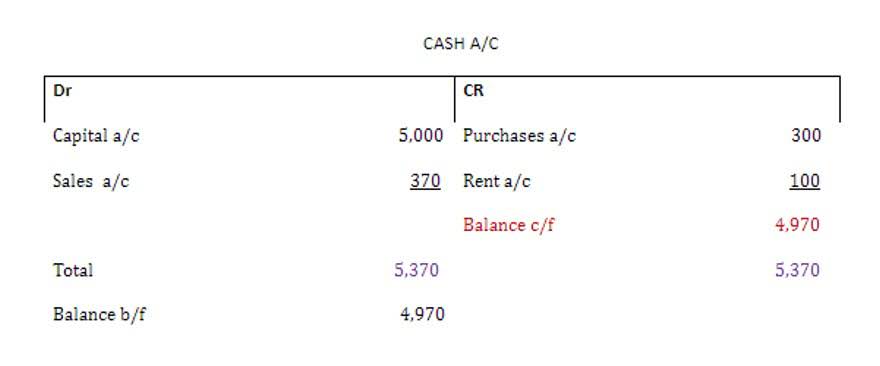
Grocery store stock is a common example of using FIFO practices in real life. A grocery store will usually try to sell their oldest products first so that they’re sold before the expiration date. This helps keep inventory fresh and reduces inventory write-offs which increases business profitability. In some cases, a business may not actually sell or dispose of its oldest goods first.
- The method works best for companies that sell large numbers of relatively similar products.
- It’s required for certain jurisdictions, while others have the option to use FIFO or LIFO.
- While FIFO refers to first in, first out, LIFO stands for last in, first out.
- If you’re a business that has a low volume of sales looking for the most amount of detail, specific inventory tracing has the insight you’ll need.
- The average inventory method usually lands between the LIFO and FIFO method.
FIFO vs LIFO: Comparing Inventory Valuation Methods
- All such information is provided solely for convenience purposes only and all users thereof should be guided accordingly.
- This method dictates that the last item purchased or acquired is the first item out.
- Since LIFO uses the most recently acquired inventory to value COGS, the leftover inventory might be extremely old or obsolete.
- Use the following information to calculate the value of inventory on hand on Mar 31 and cost of goods sold during March in FIFO periodic inventory system and under FIFO perpetual inventory system.
- To understand FIFO vs. LIFO flow of inventory, you need to visualize inventory items sitting on the shelf, each with a cost assigned to it.
Second, every time a sale occurs, we need to assign the cost of units sold in the middle column. First, we add the number of inventory units purchased in the left column along with its unit cost. Whether you need an eagle eye into the hundreds of items you sell or if you just want to stay on top of your stock, there’s an inventory management solution that’s right for you. If you sell online, most POS systems like Shopify will track inventory for you.
- Instead of selling its oldest inventory first, companies that use the LIFO method sell its newest inventory first.
- Higher inflation rates will increase the difference between the FIFO and LIFO methods since prices will change more rapidly.
- In an inflationary environment, the current COGS would be higher under LIFO because the new inventory would be more expensive.
- LIFO, or Last In, First Out, assumes that a business sells its newest inventory first.
What Is The FIFO Method? FIFO Inventory Guide
We will then have to value 20 units of ending inventory on $4 per unit (most recent purchase cost) and the remaining 3 units on the cost of the second most recent purchase (i.e., $5 per unit). The inventory balance at the end of the second day is understandably reduced by four units. On https://www.bookstime.com/ 3 January, Bill purchased 30 toasters, which cost him $4 per unit and sold 3 more units. Accounting for inventory is essential—and proper inventory management helps you increase profits, leverage technology to work more productively, and to reduce the risk of error. The FIFO (“First-In, First-Out”) method means that the cost of a company’s oldest inventory is used in the COGS (Cost of Goods Sold) calculation.

See advice specific to your business
As you can see, the FIFO method of inventory valuation results in slightly lower COGS, higher ending inventory value, and higher profits. This makes the FIFO method ideal for brands looking to represent growth in their financials. The average cost method, on the other hand, is best for brands that don’t see https://www.facebook.com/BooksTimeInc/ the cost of materials or goods increasing over time, as it is more straightforward to calculate.

Con: Higher taxes

Three units costing $5 each were purchased earlier, so how to do fifo in accounting we need to remove them from the inventory balance first, whereas the remaining seven units are assigned the cost of $4 each. Use QuickBooks Enterprise to account for inventory using less time and with more accuracy. QuickBooks allows you to use several inventory costing methods, and you can print reports to see the impact of labor, freight, insurance, and other costs. With QuickBooks Enterprise, you’ll know how much your inventory is worth so you can make real-time business decisions. The Sterling example computes inventory valuation for a retailer, and this accounting process also applies to manufacturers and wholesalers (distributors). The costs included for manufacturers, however, are different from the costs for retailers and wholesalers.

FIFO formula
When all of the units in goods available are sold, the total cost of goods sold is the same, using any inventory valuation method. FIFO is an inventory valuation method that stands for First In, First Out. As an accounting practice, it assumes that the first products a company purchases are the first ones it sells. First In, First Out (FIFO) is a concept used by businesses that track inventory. FIFO has advantages and disadvantages compared to other inventory methods.

In a rising price environment, this has the opposite effect on net income, where it is reduced compared to the FIFO inventory accounting method. With this method, companies add up the total cost of goods purchased or produced during a specified time. This amount is then divided by the number of items the company purchased or produced during that same period. To determine the cost of goods sold, the company then multiplies the number of items sold during the period by the average cost per item. The first in, first out (FIFO) cost method assumes that the oldest inventory items are sold first, while the last in, first out method (LIFO) states that the newest items are sold first.
189 Views




